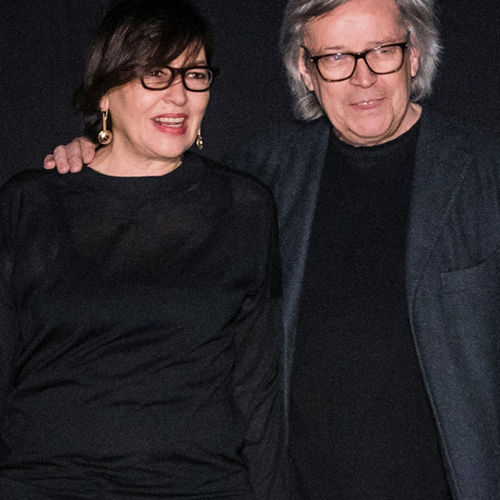
Piero Cividini
Co-founder
Brand - Cividini
Handmade, made with the technology of the hands
Italy-based Cividini, co-founded by husband-wife duo of Piero and Miriam Cividini, meets the needs of its customers who are modern, cultured, independent of trends, strong, and satisfied with their lives and their choices. A refined and clean design, precious materials, and very high-quality manufacturing are, from the beginning, the basic points of the Cividini philosophy. In an Interview with Fibre2Fashion, Co-founder Piero Cividini illustrates their journey and takes through the entire design process of their collection.
Fibre2Fashion: How was Cividini discovered and how would you two illustrate your journey in the fashion world?
Piero Cividini:
The Cividini collection, which was initially born as a small collection of cashmere sweaters at the end of the 1980s, was discovered by the international clientele, thanks to the original concept of the collection: to make the cashmere knitwear product that was very classic at the time (and in most cases still is) an item with a modern and minimal design and believe to use in the first place the elements of choosing top quality of fine materials and of the execution that at the time dominated by the presence of computer programming. Cividini proposed instead an exquisitely handcrafted execution with the motto ‘handmade, made with the technology of the hands’.
F2F: As a husband-wife duo, how do you strike a balance between your personal and professional life?
PC:
Our personal relationship does not mix with the professional one. At work, we are not husband and wife but two partners. We both (Piero and Miriam) do our utmost to take every decision in a manner that is separate from our personal relationship. The choices are made objectively by deciding only what is best for the success of our projects and collections. A good rule that we have developed over the years is not to "take work home". When we leave the studio, we no longer talk about work, and our personal life and relationships run on two different tracks—one business and one private.
F2F: How would you define the aesthetics of your collections and how do you ensure your label stands out?
PC:
The aesthetics of Cividini, a few years after its debut, has evolved into a complete collection that also includes accessories. It can be defined as ‘Modern Classic’, minimal in design and with a very selective attention to the quality of superior materials and refined execution that has remained anchored and faithful to the feature of the debut: craftsmanship.
F2F: Could you please walk us through the entire design process of your collection, from source of inspiration to the final outfit?
PC:
It almost always starts with a brainstorming between me and Miriam regarding personal impressions of how each of us imagines the idea around which the collection should be structured each time. This is sometimes influenced by images of art books, by costume or fashion photography books or by any input that can give us an aesthetic inspiration. Once these basic elements have been established, and possibly begin to represent the iconographic image of the collection, Miriam begins to search for colours to fine-tune the palette from which to draw the 4 or 5 basic colours to which all the other complementary colours can then be added around.
F2F: Could you brief about Italian fashion industry and how it has evolved over the years?
PC:
The Italian fashion industry was born in the 1960s and 70s from the point of view of the formation of both artisan and industrial companies, while Italian fashion was born in the 80s with the international affirmation of Italian stylists and their ability to create an Italian school that will strongly influence international fashion.
F2F: Do you believe in the concept of sustainable fashion? How viable is sustainability in the fashion space?
PC:
Sustainability in fashion is a very difficult thing to achieve because it is necessary to transform all production processes that are the industrial prerequisites for the creation of fashion products. It is a long and important process which needs contribution and commitment of the entire textile supply chain to make sustainable fashion products.
F2F: What are the upcoming fashion trends that can have the highest influence on fashion aspirants?
PC:
The trend towards ‘Bel vestire’ (dressing up) certainly can concretely influence the general picture of fashion precisely in its main aspect, that is the aesthetics of a moment and time.

Anurag Batra
Aseem Prakash
Rahul Mehta
Gabi Seligsohn
Bill D’Arienzo
Fanny Vermandel
Arun Sirdeshmukh
Rahul Mehta
Abhay Gupta
Pradip Mehta





_8.JPG)







